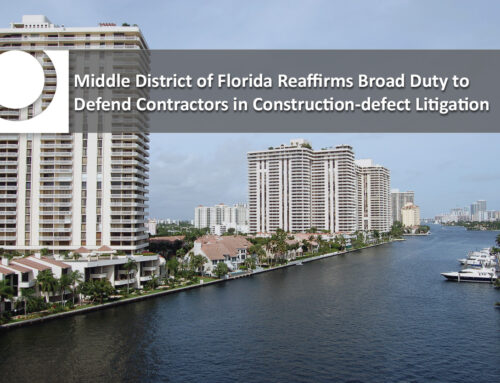Broad and Ineffective “Reservation of Rights” Letter has Big Consequences
Insurers issue reservation of rights letters (“ROR Letters”) to contractors all the time. Typically, a contractor is sued, reports the claim, and one of the first responses from its insurer is an ROR Letter. They are generally long and regurgitate what seems like the entire policy without actually informing the contractor which provisions may actually matter in light of the allegations in the complaint.
The $5 Million ROR Letter
At least one court has held that ROR Letters that fit within this category can have big consequences that benefit insureds put in this unfair position. In Advantage Builders & Exteriors, Inc. v. Mid-Continent Cas. Co. (Mo. 2012), the court awarded $5 million in compensatory and bad-faith damages to a contractor arising from such an ROR Letter.
The facts of the case are unremarkable. They are repeated nationwide countless times year over year. The insured was sued for construction defects and its insurer agreed to defend the insured — subject to a reservation of rights. To communicate the insurer’s position, it sent classic ROR Letters: long, full of policy language, but woefully short on analysis.
The court found the ROR Letters were not “effective.” Yes, they were long and had a lot of policy language. But they were so long they failed to actually inform the insured of the few policy terms that mattered:
Here, both [ROR Letters] only vaguely informed the insured that Mid-Continent would investigate and perform a coverage analysis and that it was reserving its rights to assert that there may be no duty to defend or indemnify against the claims. The [ROR Letters] generally discussed the nature of the underlying lawsuit and set forth various provisions of [the insured’s] general liability policy. Neither letter clearly and unambiguously explained how those provisions were relevant to [the insured’s] position or how they potentially created coverage issues.
As a result of the ineffective ROR Letters, the court held that the insurer was estopped from denying coverage. This is despite the fact that the insurer had already obtained a ruling from a different court that it did not owe any coverage to its insured. But for the ineffective ROR Letters, the insurer would have enjoyed the ruling that it did not owe coverage and would have been free of any liability. As a result of this court’s ruling, however, the insurer is on the hook up for compensatory damages up to the limits of its policy, and for bad faith damages—a dramatic swing from $0 to $5 million in favor of the insured.
Lessons Learned
The court’s ruling is a reminder that a ROR Letter should properly and fairly inform an insured of the policy terms that may apply to limit coverage. But they should also have more. They should discuss how the underlying facts may trigger specific exclusions or limitations. Without that critical piece, the ROR Letters may be ineffective and expose the insurer to liability.
Contractors facing large litigation expenses and potential liability should have the peace of mind that their insurers are not hiding behind policy terms buried deep in the middle of a long ROR Letter. Contractors should carefully review all ROR Letters and involve counsel early to communicate with their insurers.



